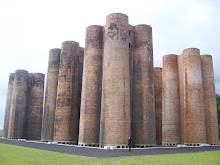As part of the exhibition and symposium The Right to the City, we will be presenting a collection of realised and unrealised work that challenges the spatial politics of the City, namely Sydney, and use a bottom-up-approach to transforming urban spaces. We are looking for artists, activists, planners and architects who are involved in “remaking” the city in more socially connected and sustainable ways, who use a do-it-yourself (or design-it-yourself) approach.
The work may have already been created or be just an initial idea. What we need are images and project information that can be collected online and exhibited at the Tin Sheds Gallery, Sydney in April 2011.
The project will present an overview of the current urban condition - the concerns and issues that are bubbling away under the surface, and distinct from large-scale, commercial and spectacle-driven urban developments.
We particularly encourage ideas that challenge the hegemony of many of the developments under construction, and open up the process of urban design.
Projects may include micro-architectures, performative urban interventions, temporary installations and strategic design.
We would like the ideas to specifically address Sydney, although the call is open worldwide.
The project DIY Urbanism is in association with the Exhibition and Symposium The Right to the City curated by Zanny Begg and Lee Stickells.
For more information please contact DIY Urbanism curator Joni Taylor.
Email: diyurbanism@gmail.com
DIY Urbanism: Submitting your Idea
Image Requirements:
Up to 10 images
Project Information:
Project Title:
Realised/Unrealised:
Location(s):
Team / Anonymous:
Project Description (up to 200 words):
Reasonings (up to 200 words):
Hurdles/Constraints:
Budget:
Deadline is Feb 1, 2011.

